Mystery Deepens as Rare 9,000-Year-Old Stone Age ‘Hammer’ Emerges from Norway’s Ancient Settlement
Imagine stumbling upon a 9,000-year-old Stone Age “hammer” while digging for a bike path—yes, really! That’s exactly what happened near Horten, Norway, where archaeologists uncovered a treasure trove of 5,000 artifacts, including stone tools, bone fragments, and the surprisingly cozy remains of a prehistoric hut smaller than your average parking spot. It’s like finding the ultimate time capsule that’s begging us to reconsider when humans traded their nomadic ways for a more settled, cookie-baking kind of life. Could this tiny hut and its everyday tools be the original “starter home”? And what tales do those bone fragments whisper about ancient feasts long forgotten? If you thought Stone Age life was all about roughing it, think again—these finds suggest a surprisingly sophisticated chapter in human history that’s just waiting to be unpacked!
Among the 5,000 artifacts found at the site near Horten, Norway, were stone tools, bone fragments, and the remnants of a prehistoric hut.
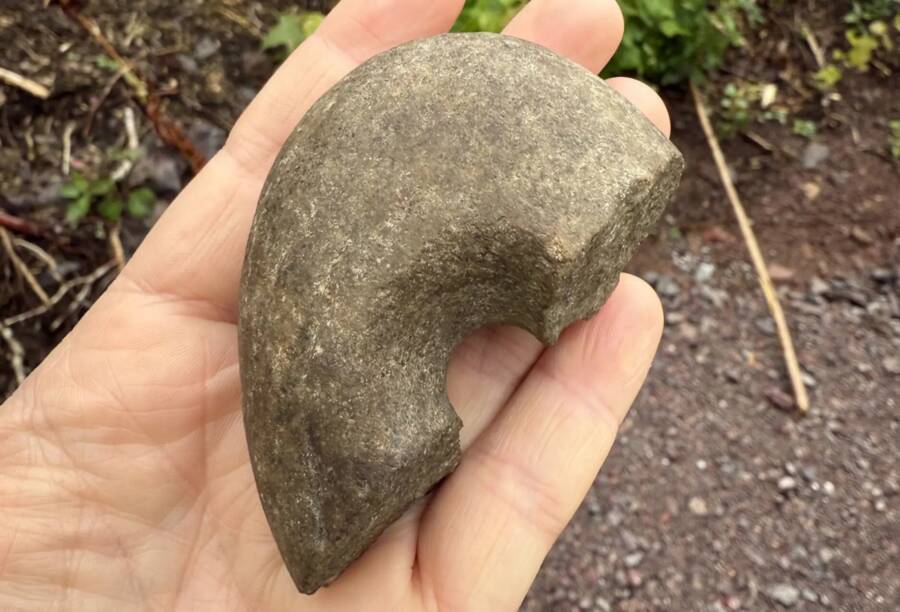
Silje Hårstad/Museum of Cultural HistoryThis club head dates back 9,000 years and features a hole through the center that was likely drilled with animal bones.
Archaeologists carrying out routine excavations ahead of the construction of a bike path in Horten, Norway, made a remarkable discovery that is rewriting Stone Age history. They unearthed thousands of artifacts, including a rare “hammer,” as well as a 9,000-year-old dwelling.
These prehistoric objects are now giving researchers a better idea of when our ancestors began to transition from a nomadic hunter-gatherer society to a more settled lifestyle.
Archaeologists Find 5,000 Prehistoric Artifacts During Routine Excavations
The club head may have been overlooked by the untrained eye. It appears to be a smooth, round stone, but it has a distinct hole drilled through the middle where it would have been attached to a shaft, archaeologist Silje Hårstad told Science Norway.
It’s unclear exactly how the hole was bored into the stone, but archaeologists suspect its maker used a bone with sharpened ends to slowly but surely drill through the rock. Hårstad also noted that the club head has “light wear and crushing marks on one side, which suggests it was used as a tool.” Some other club heads from the period feature more elaborate designs and were likely used for ceremonial purposes or as status symbols.
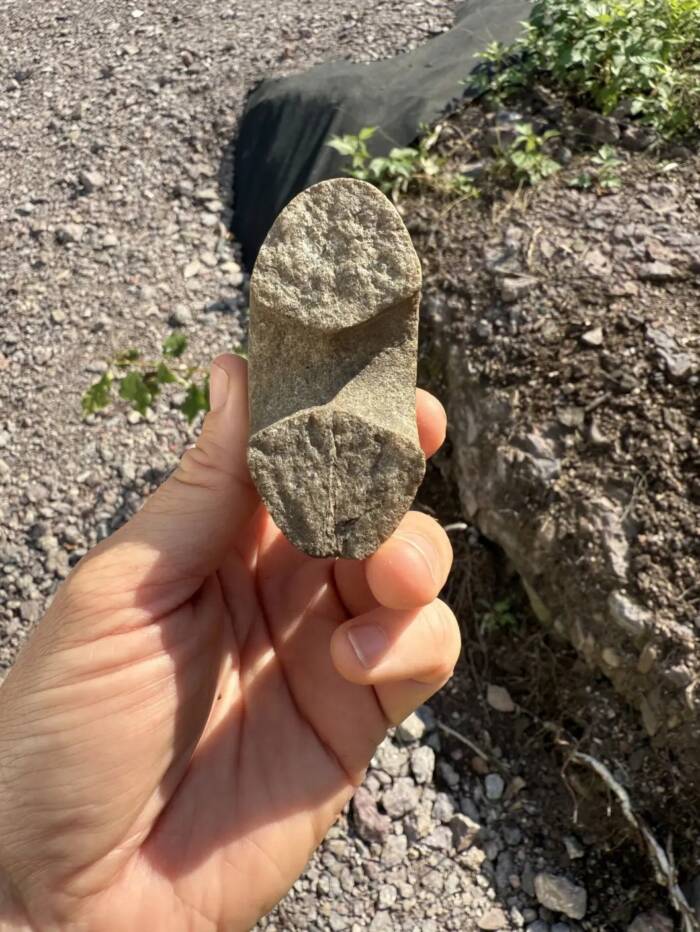
Silje Hårstad/Museum of Cultural HistoryThe club head found at the site is not as elaborate as some other Stone Age tools.
That wasn’t the case for this specific artifact. “It may have been used to pound something, like softening fibers,” said Hårstad. “It’s essentially a Stone Age hammer.”
Alongside the club head, archaeologists unearthed some 5,000 other artifacts ranging from fishhooks and ax blades to tools made from quartz. What’s more, they uncovered a Stone Age dwelling that is helping them pinpoint when exactly Norwegian hunter-gatherers began to create more permanent settlements.
Inside The Stone Age Hut Discovered At Horten
The remnants of a tiny hut measuring roughly 100 square feet — smaller than a parking space — were found at the highest point of the site. There was a stone fireplace in the center, suggesting it was a much more permanent dwelling than the tents typically used by hunter-gatherers.
Nearby, closer to the shoreline, excavations uncovered a number of bones. Testing is ongoing, but the results will reveal which animals they belonged to and what types of tools were used to butcher them. Archaeologists also hope that charred hazelnuts discovered at the site will more precisely date the settlement.
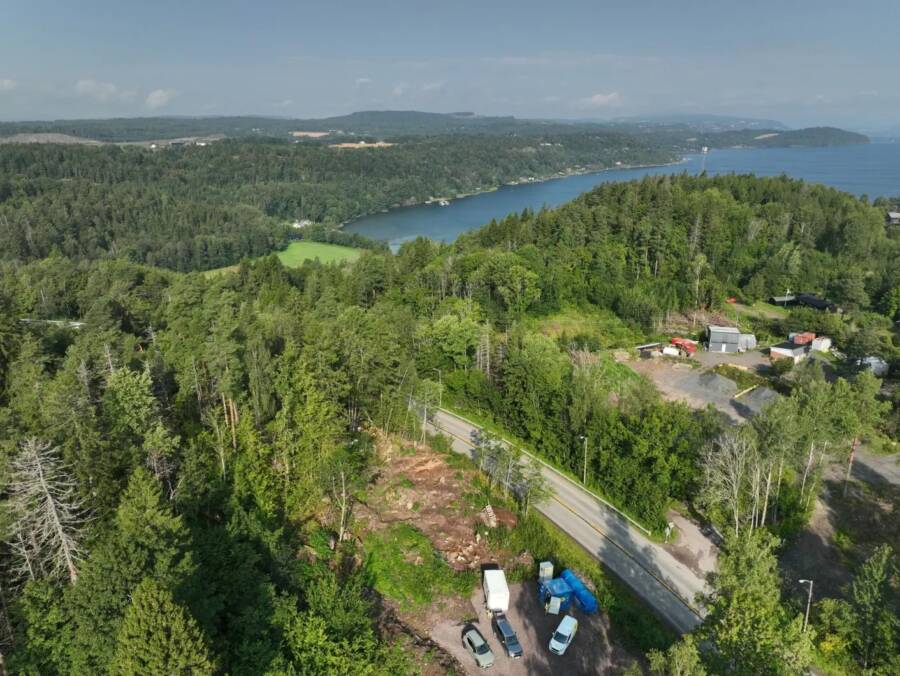
Steinar Kristensen/Museum of Cultural HistoryThe Horten excavation site in eastern Norway, just south of Oslo.
“All these finds point to a period of intense activity, enough to build up these layers of artifacts and bone remains,” Hårstad said. “As well as the fact that they invested resources in a solid house construction instead of just putting up a tent.”
Overall, the artifacts found at Horten are answering questions about a little-known time in Norwegian history. Early humans who had spent generations traveling from place to place to hunt and forage for food were beginning to settle down and spend more time in small communities, where they crafted tools, cooked meals, and paved the way for the development of larger societies.
“This is an incredibly interesting site,” said Hårstad. “It’s like a little time capsule.”
After reading about the 9,000-year-old settlement discovered in Norway, learn about the Norse warriors known as Viking berserkers. Then, go inside Pyramiden, the abandoned Soviet mining town located on a Norwegian island.
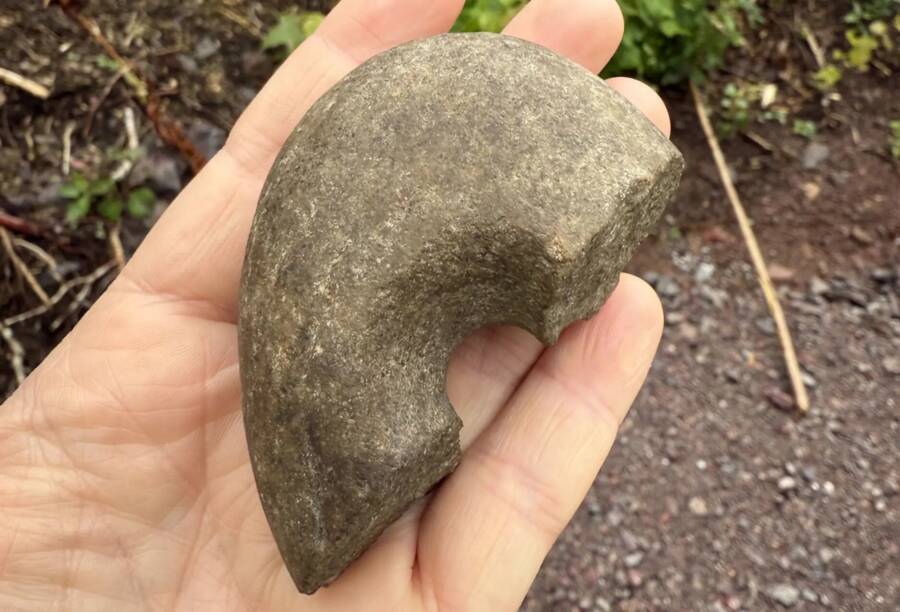






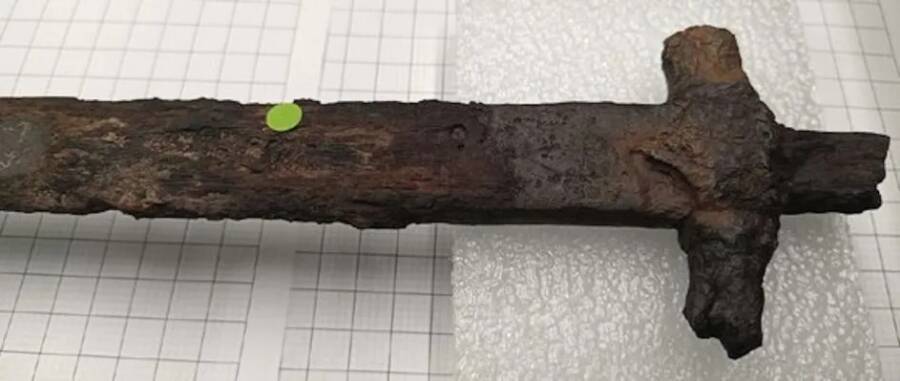
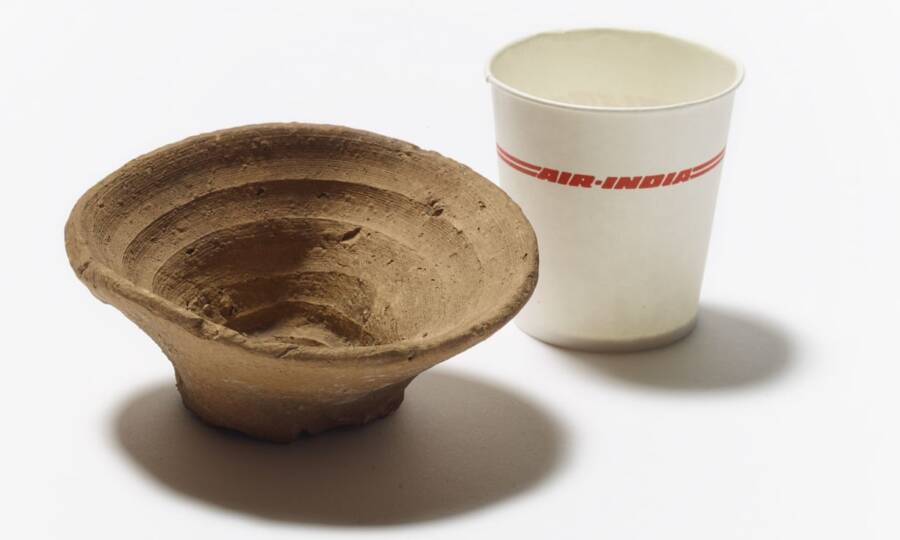











Post Comment